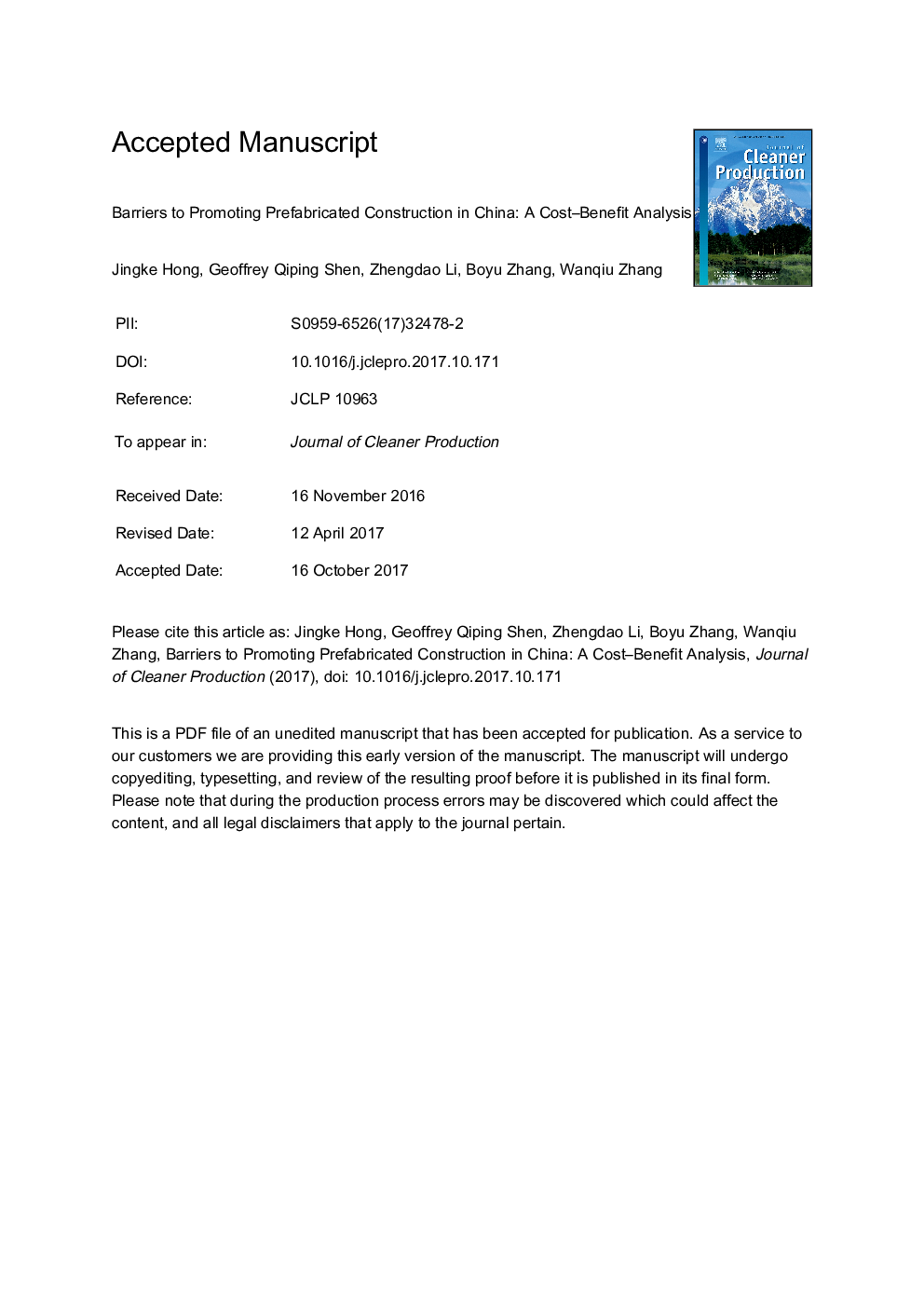| Article ID | Journal | Published Year | Pages | File Type |
|---|---|---|---|---|
| 8099985 | Journal of Cleaner Production | 2018 | 28 Pages |
Abstract
Prefabricated construction has attracted worldwide concern because of its significant role in the creation of sustainable urbanization. In Mainland China, the practice of applying prefabrication technology in the construction industry still lags behind. In fact, the economic benefit is a key concern of various stakeholders involved in the construction process and is expected to influence the delivery of prefabricated buildings significantly. Therefore, this study established a cost-benefit analysis framework to explore the basic cost composition of prefabrication and examined the effect of adopting prefabrication on the total cost of real building projects. Results show that the concrete and steel used in the typical prefabricated components were responsible for 26% to 60% of the total cost, followed by labor cost (17%-30%) and transportation (10%). The average incremental cost is highly linearly correlated with the prefabrication rate, which ranged from 237Â yuan/m2 to 437Â yuan/m2, in eight building projects. To fully gain the economic benefits from the precast construction, the future focus should lie in providing financial support for promoting the development of prefabrication technology, optimizing the structure integrity of prefabricated buildings, and improving the maturity of the precast market.
Related Topics
Physical Sciences and Engineering
Energy
Renewable Energy, Sustainability and the Environment
Authors
Jingke Hong, Geoffrey Qiping Shen, Zhengdao Li, Boyu Zhang, Wanqiu Zhang,
